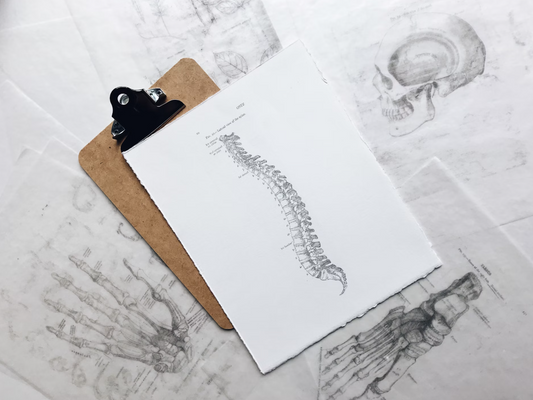Glossary: What is the Diaphragm
The diaphragm is a vital muscle in the human body, often overlooked in everyday discussions about health and anatomy. Understanding its role, structure, and importance is essential for anyone interested in how our body functions, especially regarding breathing and physical activity. This article will provide a comprehensive overview of what the diaphragm is, how it operates, and its significance in various bodily processes.
Understanding the Diaphragm
The diaphragm is a dome-shaped muscle located at the base of the thoracic cavity, separating the chest from the abdominal cavity. It plays a critical role in the respiratory process, contracting and relaxing to facilitate breathing. The diaphragm is shaped like an umbrella, and its movement is synchronized with the inhalation and exhalation of air. By learning about both its anatomical structure and its functions, we can appreciate the complexity of this remarkable muscle.
The Role of the Diaphragm in the Human Body
The diaphragm is central to many bodily functions, particularly in respiration. When you inhale, the diaphragm contracts, lowering the pressure in the chest cavity. This action allows air to flow into the lungs, where oxygen is exchanged for carbon dioxide. During exhalation, the diaphragm relaxes, pushing air out of the lungs. This simple yet powerful mechanism is crucial for sustaining life, highlighting the diaphragm's importance in our everyday existence.
Moreover, beyond its function in respiration, the diaphragm also plays a role in various bodily processes such as digestion and posture. It works in conjunction with other muscles to support the organs in the abdomen and help maintain good posture by stabilizing the spine. The diaphragm's rhythmic movements can also influence the movement of the digestive organs, promoting peristalsis and aiding in the efficient processing of food. This interplay between the diaphragm and the digestive system illustrates how interconnected our bodily systems are, and how one muscle can have far-reaching effects on overall health.
The Structure of the Diaphragm
Structurally, the diaphragm is comprised of muscle fibers and connective tissue. It is primarily made up of skeletal muscle, which is under voluntary control. This means that while breathing is often an automatic process, we can consciously control our diaphragm when needed, such as during singing or playing a wind instrument.
The diaphragm has several important attachments: it connects to the lower ribs, the xiphoid process (the lower part of the breastbone), and the lumbar vertebrae. This unique structure enables it to exert a significant downward force during contraction, which is crucial for effective breathing. Additionally, the diaphragm is innervated by the phrenic nerve, which originates from the cervical spine. This nerve plays a vital role in transmitting signals from the brain to the diaphragm, ensuring that it functions smoothly and efficiently. Any disruption to this nerve can lead to breathing difficulties, underscoring the importance of the diaphragm not just as a muscle, but as a key player in our respiratory health.
The Diaphragm and Breathing
Breathing is a fundamental life process that sustains us every moment. The diaphragm is the primary muscle responsible for this vital function. It acts like a piston, moving up and down in response to the body's oxygen needs.
How the Diaphragm Contributes to Respiration
When you inhale, the diaphragm contracts and flattens, increasing the volume of the thoracic cavity. As a result, the pressure in the lungs decreases, and air rushes in through the trachea. This process is known as negative pressure breathing and is essential for getting oxygen into our bloodstream.
In the act of exhaling, the diaphragm relaxes and returns to its dome shape. This movement helps push air out of the lungs, facilitating the removal of carbon dioxide, a waste product of metabolism. Understanding this process highlights just how crucial the diaphragm is for effective breathing and overall respiratory health.
The Diaphragm's Impact on Lung Capacity
The efficiency of the diaphragm greatly influences lung capacity. Individuals with strong diaphragm control can typically take deeper breaths, providing their body with more oxygen. This is particularly important in athletic endeavors or in situations where the body experiences high demands for oxygen.
Moreover, training the diaphragm can enhance a person's overall lung capacity. Specific breathing exercises focused on deep, controlled breathing can help expand the lungs and improve oxygen intake, ultimately leading to better physical performance and improved endurance.
In addition to its role in physical activities, the diaphragm also plays a significant part in emotional well-being. Deep breathing techniques, often utilized in practices such as yoga and meditation, engage the diaphragm and promote relaxation. This not only helps reduce stress but also fosters a greater sense of mindfulness and presence. By consciously controlling our breath, we can influence our heart rate and blood pressure, creating a calming effect that benefits both mind and body.
Furthermore, the diaphragm's function is interconnected with other bodily systems. For instance, its movement during breathing can aid in lymphatic drainage, helping to remove toxins from the body. This highlights the diaphragm's role not just in respiration but also in maintaining overall health. Understanding this multifaceted function encourages us to appreciate the diaphragm's importance beyond mere breathing, recognizing it as a vital component of our holistic well-being.
Disorders Related to the Diaphragm
While the diaphragm is a robust muscle, it can be affected by various disorders that inhibit its ability to function properly. Understanding these disorders helps in early detection and treatment. The diaphragm plays a crucial role in respiration, and any impairment can significantly impact a person's quality of life, making awareness of these conditions essential for both patients and healthcare providers.
Common Diaphragm Disorders and Their Symptoms
Several common disorders can affect the diaphragm, including diaphragm paralysis, hernias, and congenital diaphragmatic hernia. Diaphragm paralysis can occur due to nerve damage, leading to difficulty breathing and reduced lung capacity. Symptoms may include shortness of breath, particularly when lying down, and fatigue. In some cases, patients may also experience a paradoxical movement of the diaphragm, where it moves upwards instead of downwards during inhalation, further complicating breathing efforts.
A diaphragmatic hernia, often caused by a tear in the diaphragm, can lead to the displacement of abdominal organs into the thoracic cavity, causing further complications. Symptoms may include chest pain and difficulty breathing, often requiring medical attention. Additionally, patients may experience gastrointestinal symptoms such as nausea or vomiting if the hernia affects the stomach or intestines. Early diagnosis through imaging techniques like X-rays or CT scans is vital to prevent serious complications.
Treatment Options for Diaphragm Disorders
Depending on the specific condition affecting the diaphragm, treatment options can vary widely. For diaphragm paralysis, treatments might include physical therapy to strengthen respiratory muscles or even surgical intervention in severe cases. In some instances, non-invasive ventilation support may be recommended to assist with breathing, especially during sleep. Patients are often encouraged to engage in respiratory rehabilitation programs that focus on improving lung function and overall endurance.
In the case of a diaphragmatic hernia, surgery is often needed to repair the tear and reposition any displaced organs. Patients may also benefit from breathing exercises that can enhance diaphragm function and overall respiratory efficiency. Post-operative care is crucial, as patients may need to gradually increase their activity levels while being monitored for any signs of complications. Furthermore, lifestyle modifications, such as avoiding heavy lifting or straining, can help prevent recurrence and support long-term recovery.
The Diaphragm and Speech
The diaphragm does not only serve respiratory functions; it also plays a significant role in speech production. Understanding this connection can be particularly beneficial for speakers, singers, and actors.
The Diaphragm's Role in Voice Production
When speaking, the diaphragm provides the necessary support for the breath control needed for voice production. Good diaphragmatic control allows for sustained speech without frequent gasping for air, enabling smoother, more controlled verbal expression.
This muscle works in conjunction with other structures, such as the vocal cords, to produce sound. By exerting proper pressure and control, a person can modulate their voice for different expressions and emotional tones. The diaphragm's ability to regulate airflow is crucial; it helps maintain a steady stream of air that is essential for producing clear and articulate speech. Without this support, the voice can become strained or shaky, potentially leading to vocal fatigue over time.
How Diaphragm Control Can Improve Speech
Enhancing diaphragm control can significantly impact speech quality. Voice training techniques often include exercises that focus on diaphragmatic breathing, leading to more resonance and projection in one's voice. These exercises not only strengthen the diaphragm but also promote better posture and alignment, which are vital for optimal vocal performance.
For individuals in performing arts or public speaking, mastering diaphragm control can improve audience engagement, as it allows for clearer pronunciation and stronger emotional delivery. Consequently, developing awareness of diaphragm usage can be beneficial for both personal and professional communication. Moreover, understanding how to harness the diaphragm can also alleviate common issues such as stage fright or anxiety, as controlled breathing techniques help calm the nervous system. This holistic approach to voice training not only enhances vocal quality but also fosters a deeper connection with the audience, making the speaker's message more impactful and memorable.
The Diaphragm in Physical Exercise
Lastly, the diaphragm is integral to physical exercise, where breathing patterns often determine the effectiveness of workouts. Athletes and fitness enthusiasts should prioritize diaphragm training as part of their physical regimen.
Importance of Diaphragm Control in Sports
In sports, proper diaphragm control can enhance performance by influencing stamina and recovery. Athletes who can engage their diaphragm effectively are able to optimize their breathing, allowing for better oxygen distribution during activity. This can lead to improved endurance and faster recovery times post-exercise.
Moreover, engaging the diaphragm during exercise can prevent injuries, as proper breathing techniques stabilize core muscles, reducing unnecessary strain on the body. This holistic approach to training highlights the diaphragm's role in overall physical health. Additionally, athletes who master diaphragm control often report a heightened sense of mental clarity and focus during competition. This connection between breath and mental state can be particularly beneficial in high-pressure situations, where maintaining composure is essential for peak performance.
Exercises to Strengthen the Diaphragm
There are several effective exercises designed to strengthen the diaphragm, including diaphragmatic breathing exercises. These typically involve inhaling deeply through the nose while allowing the belly to expand, followed by exhaling slowly through pursed lips.
- **Diaphragmatic Breathing:** Lie on your back with your knees bent. Place one hand on your chest and the other on your belly. Inhale deeply through your nose, ensuring your belly rises, while keeping your chest still.
- **Pursed-Lip Breathing:** Inhale slowly through your nose for a count of two, then exhale through pursed lips, as if you are blowing out a candle, for a count of four. This helps strengthen diaphragm control and improves endurance.
Incorporating these exercises into your daily routine can lead to better respiratory efficiency and enhanced physical performance. Furthermore, practices such as yoga and Pilates also emphasize the importance of diaphragmatic breathing, integrating it into their routines to promote relaxation and improve overall body awareness. These disciplines not only enhance diaphragm strength but also contribute to greater flexibility and balance, making them excellent complements to any fitness program.
In conclusion, the diaphragm is a complex yet essential muscle that affects various systems in our body. From breathing to speech and physical performance, understanding the diaphragm's roles helps us appreciate its importance in our daily lives. Whether you're an athlete, a singer, or just someone interested in health, recognizing the value of the diaphragm can lead to a greater focus on respiratory health and strength.
As you've learned about the critical role of the diaphragm in maintaining respiratory health and strength, take the next step with Alveo. Our innovative Continuous Respiratory Wearable is designed for everyday use, providing you with insights into your breath patterns and the environmental factors that influence them. With Alveo, you can access personalized breathing routines tailored to your lung capacity and enjoy the comfort of our lightweight device. Don't miss out on enhancing your respiratory well-being. Sign up on our waiting list today and breathe easier with Alveo.




